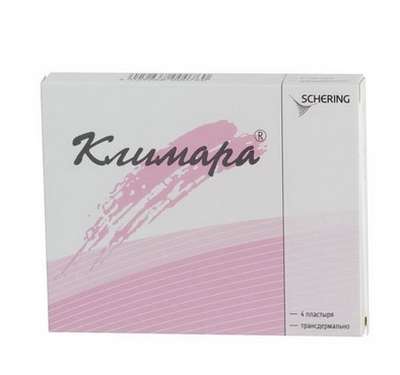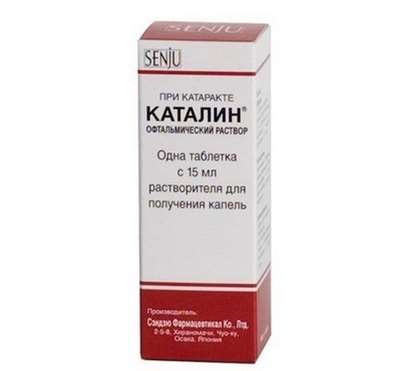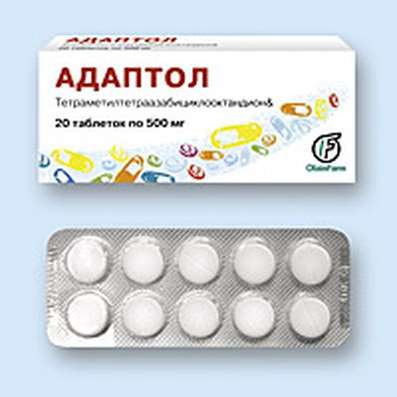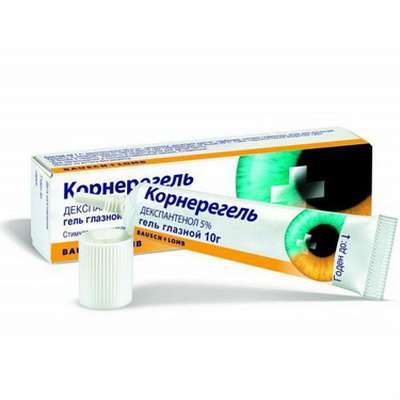Instruction for use: Edarbi
I want this, give me price
Dosage form: tablets
Active substance: Azilsartani medoxomilum
ATX
C09CA09 Azilsartan medoxomil
Pharmacological group
Angiotensin II receptor antagonist [Angiotensin II receptor antagonists (AT1-subtype)]
Nosological classification (ICD-10)
I10 Essential (primary) hypertension: hypertension; Arterial hypertension; Arterial hypertension crisis course; Essential Hypertension; Essential hypertension; Essential hypertension; Essential hypertension; Essential hypertension; Primary hypertension; Arterial hypertension, complications of diabetes; The sudden increase in blood pressure; Hypertensive disorders of blood circulation; hypertensive condition; hypertensive crises; arterial Hypertension; malignant Hypertension; Hypertonic disease; hypertensive crises; accelerated hypertension; malignant hypertension; The aggravation of hypertensive disease; Transient hypertension; Isolated systolic hypertension
Composition
Tablets - 1 table.
active substance: Azilsartan medoxomil potassium 21.34 / 42.68 / 85.36 mg
Corresponds to azilsartan medoxomil - 20/40/80 mg
Auxiliary substances: mannitol - 47.815 / 95.63 / 191.26 mg; Fumaric acid - 1/2/4 mg; Sodium hydroxide - 0.345 / 0.69 / 1.38 mg; Giprolase - 2,7 / 5,4 / 10,8 mg; Croscarmellose sodium - 6.9 / 13.8 / 27.6 mg; MCC - 9/18/36 mg; Magnesium stearate - 0.9 / 1.8 / 3.6 mg
Description of dosage form
Tablets, 20 mg: from white to almost white, round, biconvex, with engraved "ASL" on one side and "20" on the other.
Tablets, 40 mg: from white to almost white, round, biconvex, with engraved "ASL" on one side and "40" on the other.
Tablets, 80 mg: white to almost white, round, biconvex, with engraved "ASL" on one side and "80" on the other.
Pharmachologic effect
Mode of action - antihypertensive.
Pharmacodynamics
Azolsartan medoxomil, the active substance of EdarbiŽ, is a specific antagonist of angiotensin II type 1 (AT1) receptors.
Azolsartan medoxomil is a prodrug for oral administration. Azolsartan medoxomil quickly turns into an active molecule of azilsartan, which selectively prevents the development of the effects of angiotensin II by blocking its binding to the AT1 receptors in various tissues. Angiotensin II is the primary vasoactive hormone RAAS with effects including vasoconstriction, cardiac stimulation, synthesis stimulation and aldosterone release, and as a consequence - renal sodium reabsorption.
The blockade of AT1 receptors inhibits the negative regulatory response of angiotensin II to renin secretion, but the total increase in plasma activity of renin and the level of circulating angiotensin II does not suppress the antihypertensive effect of azilsartan.
The antihypertensive effect of azilsartan medoxomil develops during the first 2 weeks of use with the achievement of maximum therapeutic effect after 4 weeks. Reduction of blood pressure after ingestion of a single dose is usually achieved within a few hours and persists for 24 hours.
The withdrawal syndrome (a sharp increase in blood pressure after a sudden withdrawal of the drug) after a long (during 6 months) therapy with EdarbiŽ was not observed.
The safety and effectiveness of the drug do not depend on the age of the patients, but a greater sensitivity to lowering blood pressure in some elderly patients cannot be ruled out. As with the use of other angiotensin II receptor antagonists and ACE inhibitors, the antihypertensive effect is less pronounced in patients of the Negroid race (usually a population with low renin activity in the blood plasma).
Simultaneous use of EdarbiŽ 40 and 80 mg with dihydropyridine BKK (amlodipine) or thiazide diuretics (chlorthalidone) leads to an additional reduction in blood pressure as compared to antihypertensive agents used in monotherapy (see "Interaction").
Influence on repolarization processes
Evaluation of the potential of EdarbiŽ to increase the QT / QTc interval was performed in healthy volunteers during the QT / QTc study. When using EDARBIŽ at a dose of 320 mg, an increase in the QT / QTc interval was not observed.
QTc - corrected (relative to the heart rate) value of the QT interval, relative value. Since the duration of the QT interval depends on the heart rate (lengthening when it slows down), it must be scaled for evaluation with respect to the heart rate.
The prolongation of the QT interval reflects the heterogeneity of the processes of ventricular myocardial repolarization, and is regarded as an independent indicator indicating the occurrence of fatal cardiac arrhythmias.
Pharmacokinetics
Suction
Azolsartan medoxomil is a prodrug. After oral administration, it becomes a pharmacologically active metabolite of azilsartan during absorption from the digestive tract by the action of the enzyme carboxymethylenebutenolidase in the intestine and liver.
Estimated absolute bioavailability of azilsartan medoxomil for oral administration is approximately 60% according to the profile of concentrations in the blood plasma. Cmax of azsartan in blood plasma is achieved on average within 1.5-3 hours after ingestion. Eating food does not affect the bioavailability of azilsartan.
Distribution
Vd of azilsartan is about 16 liters. Azilsartan binds to blood plasma proteins (more than 99%), mainly with blood plasma albumins. The connection with blood plasma proteins remains constant at a concentration of azilsartan in the blood plasma, significantly exceeding the range achieved by taking the recommended doses.
Data on the use of the drug during pregnancy and during breastfeeding are absent. Azilsartan penetrates the placenta of pregnant rats and is excreted into the milk of lactating rats (see "Application in pregnancy and lactation").
Studies on animals with radioactive labels showed that the amount of azilsartan penetrating through the BBB is minimal.
Metabolism
Azilsartan is metabolized to two primary metabolites, mainly in the liver. The main metabolite in the blood plasma is formed by O-dealkylation and is referred to as the M-II metabolite, the secondary metabolite is formed by decarboxylation and is referred to as the M-I metabolite. The AUC values for these metabolites in humans are 50 and less than 1%, respectively, compared with azilsartan. M-I and M-II do not affect the pharmacological activity of EdarbŽ. The main enzyme that provides the metabolism of azilsartan is the isoenzyme CYP2C9.
Excretion
Azilsartan and its metabolites are excreted from the body, both through the intestine, and by the kidneys. Studies have shown that after ingestion of azilsartan medoxomil, about 55% (mainly in the form of metabolite M-I) is found in the feces and about 42% (15% in the form of azilsartan, 19% in the form of a metabolite M-II) - in the urine . T1 / 2 of azilsartan is about 11 hours and the renal clearance is about 2.3 ml / min. Css of azilsartan is reached within 5 days, and its cumulation in blood plasma with a single daily application does not occur.
Linearity / nonlinearity
The pharmacokinetics of azilsartan in azilsartan medoxomil is proportional to the dosage in the dose range from 20 to 320 mg after single or multiple oral administration.
Pharmacokinetics in special groups
Children. The pharmacokinetics of azilsartan in children under the age of 18 years has not been studied.
Patients of advanced age. The pharmacokinetics of azilsartan in young (18-45 years) and elderly (65-85 years) patients is not significantly different.
Renal insufficiency. In patients with mild, moderate and severe degree of renal failure, the AUC was increased by +30, +25 and + 95%, respectively. The increase in AUC in patients with terminal stage of renal failure, on hemodialysis, was not observed. Clinical data on pharmacokinetics in patients with severe degree or terminal stage of renal failure are absent.
Azilsartan is not excreted from the systemic blood flow through hemodialysis.
Liver failure. The use of EdarbiŽ for more than 5 days in patients with mild (class A on the Child-Pugh scale) or moderate (class B on the Child-Pugh scale) severity of liver failure leads to a slight increase in AUC (1.3-1.6 times, respectively ). The pharmacokinetics of EdarbiŽ in patients with severe (grade C on the Child-Pugh scale) were not studied for hepatic impairment.
Sexual accessory. The pharmacokinetics of azilsartan in men and women is not significantly different. Correction of dose depending on sex is not required.
Race affiliation. The pharmacokinetics of azilsartan depending on the race of patients is not significantly different.
Indications for the Edarbi
Essential hypertension.
Contraindications
Hypersensitivity to the active substance and other components of the drug;
Simultaneous administration of aliskiren in patients with diabetes mellitus;
Severe violations of the liver (more than 9 points on the scale Child-Pugh) (no experience of use);
pregnancy;
Age to 18 years (effectiveness and safety not established).
With caution: severe chronic heart failure (NYHA functional class IV); Renal failure of severe degree (Cl creatinine <30 ml / min); Bilateral stenosis of the renal arteries and stenosis of the artery of a single functioning kidney; Ischemic cardiomyopathy; Ischemic cerebrovascular disease; Condition after kidney transplantation; Conditions accompanied by a decrease in BCC (including vomiting, diarrhea), as well as in patients who follow a diet with restriction of table salt; With simultaneous use with high doses of diuretics; Primary hyperaldosteronism; Hyperkalemia; Stenosis of the aortic or mitral valves; Hypertrophic obstructive cardiomyopathy; Age over 75 years.
If the patient has one of the listed diseases, you should consult your doctor before taking EdarbiŽ.
Application of pregnancy and breastfeeding
In animal studies, it has been found that azilsartan and M-II penetrate the placental barrier. Patients planning a pregnancy should begin therapy with alternative antihypertensive drugs with an established safety profile for pregnant women. Immediately after confirmation of pregnancy, you should stop taking Edarbi and, if necessary, begin treatment with drugs approved for use during pregnancy.
In newborns, whose mothers received therapy with EdarbiŽ, hypotension may develop, and newborns should be under careful medical supervision.
There is no information on the ability of azilsartan and / or its metabolites to enter breast milk. In animal studies, it has been found that azilsartan and M-II are secreted into the milk of lactating rats.
Due to the lack of experience with the use of EdarbiŽ in women during breastfeeding, its use in this category of patients is not recommended. Preferably the use of drugs with the most studied safety profile, especially during the care of a newborn or premature baby.
Fertility. There are no data on the effect of EdarbiŽ on fertility in humans. Preclinical studies showed no effect on male or female fertility in rats.
Side effects
The incidence of adverse reactions was determined in accordance with WHO recommendations: very often (≥1 / 10); Often (≥1 / 100, <1/10); Infrequent frequency (≥1 / 10000, <1/1000), very rarely (<1/10000), including individual messages; unspecified frequency (frequency cannot be calculated from available data) .
From the nervous system: often - dizziness.
From the side of blood vessels: infrequent - marked decrease in blood pressure.
From the gastrointestinal tract: often - diarrhea; Infrequently - nausea.
From the skin and subcutaneous tissues: infrequently - rash, itching; Rarely - angioedema.
From the musculoskeletal and connective tissue: infrequently - muscle spasms.
Effect on the results of laboratory and instrumental studies: often - increased activity of CK; Infrequently - an increase in the concentration of creatinine, hyperuricemia.
General disorders: infrequent - increased fatigue, peripheral edema.
Description of individual adverse reactions
With the simultaneous use of Edarbi Ž with chlorthalidone, the incidence of adverse reactions - a marked decrease in blood pressure and an increase in creatinine concentration - increases from infrequent to frequent.
With the simultaneous use of EdarbiŽ with amlodipine, the frequency of the undesirable reaction-peripheral edema-increases from infrequent to frequent, but is less frequent than with amlodipine monotherapy.
Rarely observed angioedema, including edema of the face, lips and periorbital edema.
As with the use of other angiotensin II receptor antagonists and ACE inhibitors, the simultaneous use of EdarbiŽ with diuretics (eg chlorthalidone) leads to an increase in cases of increased creatinine concentrations. An increase in the creatinine concentration with concomitant use of EDARBIŽ with diuretics is associated with a greater decrease in blood pressure as compared with EDARBIŽ monotherapy. Most of these effects were transient or non-progressive, as long as patients continued therapy. After drug withdrawal, the majority of cases of increase in creatinine concentration that did not pass during treatment were reversible. The concentration of creatinine in most patients returned to values on the baseline, or values close to the baseline.
In the treatment of EdarbiŽ, a small increase in serum uric acid concentration (10.8 μmol / L) was observed compared with placebo (4.3 μmol / L).
As with other RAAS inhibitors, a small decrease in hemoglobin and hematocrit was observed in monotherapy (an average decrease of 3 g / L and 1% by volume, respectively).
If any of the side effects described in the description are aggravated, or the patient has noticed any other side effects not listed in the description, you should inform your doctor.
Interaction
Lithium. There was a reversible increase in serum lithium concentration and toxicity during simultaneous use of lithium preparations and ACE inhibitors and lithium preparations with angiotensin II receptor antagonists. Therefore, simultaneous use of azilsartan medoxomil in combination with lithium preparations is not recommended (see "Special instructions"). If it is necessary to use the appropriate combination therapy, regular monitoring of the lithium content in serum is recommended.
NSAIDs. With simultaneous use of angiotensin II antagonists and NSAIDs (for example, selective inhibitors of COX-2, and nonselective NSAIDs, including acetylsalicylic acid in doses exceeding 3 g / day, the attenuation of antihypertensive effect is possible.At simultaneous use of angiotensin II antagonists and NSAIDs may increase Risk of renal dysfunction and increase in serum potassium content.Therefore, at the beginning of treatment, patients are recommended to take a regular intake of sufficient fluid and monitor kidney function.
Potassium preparations and potassium-sparing diuretics, heparin. Simultaneous use of potassium-sparing diuretics, potassium preparations, salt substitutes containing potassium and other medicines (eg, heparin) with azilsartan medoxomil can lead to an increase in serum potassium levels (see Special instructions). Patients should be monitored for serum potassium during combined therapy.
Double blockade of RAAS. Double blockade of RAAS with angiotensin II receptor antagonists, ACE inhibitors, or aliskiren is associated with an increased risk of arterial hypotension, hyperkalemia, and renal dysfunction (including acute renal failure) compared with monotherapy.
Additional information on the interaction of azilsartan medoxomil. No pharmacokinetic interaction was observed with the simultaneous use of azilsartan medoxomil or azilsartan with amlodipine, antacid preparations (magnesium and aluminum hydroxide), chlorthalidone, digoxin, fluconazole, glibenclamide, ketoconazole, metformin and warfarin.
Azilsartan medoxomil is converted into a pharmacologically active metabolite (azilsartan) during absorption from the gastrointestinal tract by the action of the enzyme carboxymethylenebutenolidase in the intestine and liver. In vitro studies have shown that interaction based on inhibition of enzymes is unlikely.
Diuretics and other antihypertensives. The antihypertensive effect of the therapy with azilsartan medoxomil can be strengthened when combined with other antihypertensive agents, including diuretics (chlorthalidone or hydrochlorothiazide), and dihydropyridine BCC (amlodipine).
Dosing and Administration
Inside, regardless of time of food intake, once a day.
The recommended initial dose is 40 mg once a day. If it is necessary to further reduce blood pressure, the dose of the drug can be increased to a maximum of 80 mg once a day.
The maximum daily dose is 80 mg.
In case of inadequate control of blood pressure in monotherapy with EdarbiŽ it is possible to use it simultaneously with other antihypertensive agents, including diuretics (chlorthalidone or hydrochlorothiazide) and dihydropyridine BKK (amlodipine).
Duration of treatment. EdarbiŽ should be taken daily, without interruption. In the event of discontinuation of treatment, the patient should inform the doctor about this.
Skipping the dose. If you miss a regular dose, the patient should take the next dose at the usual time. Do not take a double dose of EdarbiŽ.
Special Groups
Patients of advanced age (65 years and older). It is not necessary to correct the initial dose of EdarbiŽ in elderly patients. However, in patients over the age of 75, a dose of 20 mg can be considered as an initial (increases the risk of developing arterial hypotension).
Patients with impaired renal function. There is no clinical experience with the use of EdarbiŽ in patients with AH with impaired renal function and severe end-stage renal failure, so use the drug in this category of patients should be cautious. There is no need for correction of the dosing regimen in patients with impaired renal function of mild to moderate severity.
Patients with impaired hepatic function. It is not recommended to use the drug in patients with impaired hepatic function due to lack of clinical experience (see "Contraindications"). Due to the limited experience with the use of EdarbiŽ in patients with impaired liver function of mild to moderate severity, it is recommended to start treatment at a dose of 20 mg once a day and monitor it carefully.
Decrease of BCC. The EdarbiŽ drug should be given to patients with reduced BCC and / or hyponatremia (for example, patients with prolonged vomiting, diarrhea, or taking large doses of diuretics) only under strict medical supervision. It is also recommended to start treatment with a dosage of 20 mg once a day.
Heart failure. Due to a lack of clinical experience, EdarbiŽ should be used with caution in patients with AH with severe chronic heart failure (IV functional class according to the NYHA classification).
Negroid race. As with other angiotensin II receptor antagonists (AT1) and ACE inhibitors, a lower BP decrease is observed in patients of the Negroid race than in the rest of the population. In connection with this, for an adequate control of blood pressure in patients of the Negroid race, it may be necessary to increase the dose of EdarbiŽ and complex therapy more often than in other patients.
Overdose
The experience of using EdarbiŽ in adults at doses up to 320 mg / day for 7 days shows that the drug is well tolerated.
Symptoms: marked decrease in blood pressure, dizziness.
Treatment: with a pronounced decrease in blood pressure, give the patient a prone position, raise the legs, carry out measures to increase the BCC; Symptomatic therapy.
Azilsartan is not excreted from the systemic blood flow through dialysis.
Special instructions
Activated RAAS. Patients in whom vascular tone and renal function depend heavily on RAAS activity (for example, in patients with severe chronic heart failure (NYHA functional class IV), severe renal failure or renal artery stenosis), drug treatment acting on RAAS , Such as ACE inhibitors and angiotensin II receptor antagonists, is associated with the possibility of developing acute arterial hypotension, azotemia, oliguria, or rarely acute renal failure. The possibility of developing these effects cannot be ruled out when using EdarbiŽ.
A sharp decrease in blood pressure in patients with ischemic cardiomyopathy or ischemic cerebrovascular disease can lead to the development of myocardial infarction or stroke.
Kidney transplantation. Data on the use of EdarbiŽ in patients who have recently undergone kidney transplantation are not available.
Violation of the function of the liver. Data on the clinical experience of the use of EdarbiŽ in patients with severe liver function impairment are not available, therefore, the use of the drug in this category of patients is not recommended.
Arterial hypotension against the background of disturbance of water-electrolyte balance. In patients with reduced BCC and / or hyponatremia (as a result of vomiting, diarrhea, taking large doses of diuretics, or adherence to a diet with restricted intake of table salt), clinically significant hypotension may develop after initiating Edarbi therapy. Hypovolemia should be adjusted before starting treatment with EdarbiŽ or starting treatment with a dosage of 20 mg.
Primary hyperaldosteronism. Patients with primary hyperaldosteronism are usually resistant to therapy with antihypertensive drugs that affect RAAS. In this regard, EdarbiŽ is not recommended for such patients.
Hyperkalemia. Clinical experience with other drugs that affect RAAS shows that simultaneous administration of EdarbiŽ with potassium-sparing diuretics, potassium preparations or salt substitutes containing potassium, or other drugs that can increase the potassium content of the blood (eg heparin) can lead to hyperkalemia In patients with arterial hypertension. In elderly patients, patients with renal insufficiency, diabetes mellitus and / or patients with other concomitant diseases, the risk of developing hyperkalemia increases, which can be fatal. In such patients it is recommended to monitor the potassium content in the blood serum.
Stenosis of aortic or mitral valves, hypertrophic obstructive cardiomyopathy. Care should be taken when administering EdarbiŽ to patients with aortic or mitral stenosis or hypertrophic obstructive cardiomyopathy.
Lithium. As with other angiotensin II receptor antagonists, simultaneous use of lithium preparations and EdarbiŽ preparation is not recommended (see "Interaction").
Impact on the ability to drive vehicles and mechanisms. Based on pharmacodynamic properties, it is expected that the azilsartan medoxomil will have little effect on the ability to drive vehicles and control mechanisms. Care should be taken, as with any antihypertensive drug (risk of dizziness and fatigue).
Release form
Tablets, 20 mg, 40 mg and 80 mg. On the 14 table. In an aluminum blister with a desiccant built into the PE layer.
1, 2, 3, 4 or 7 blisters are placed in a cardboard pack.
Manufacturer
Takeda Pharmaceutical Company Limited, a plant in Osaka.
Conditions of supply of pharmacies
On prescription.
Storage conditions of the drug Edarbi
In a place protected from light and moisture, at a temperature of no higher than 25 ° C. (In the original packaging).
Keep out of the reach of children.
The shelf life of the drug Edarbi
3 years.
Do not use beyond the expiration date printed on the package.

 Cart
Cart





